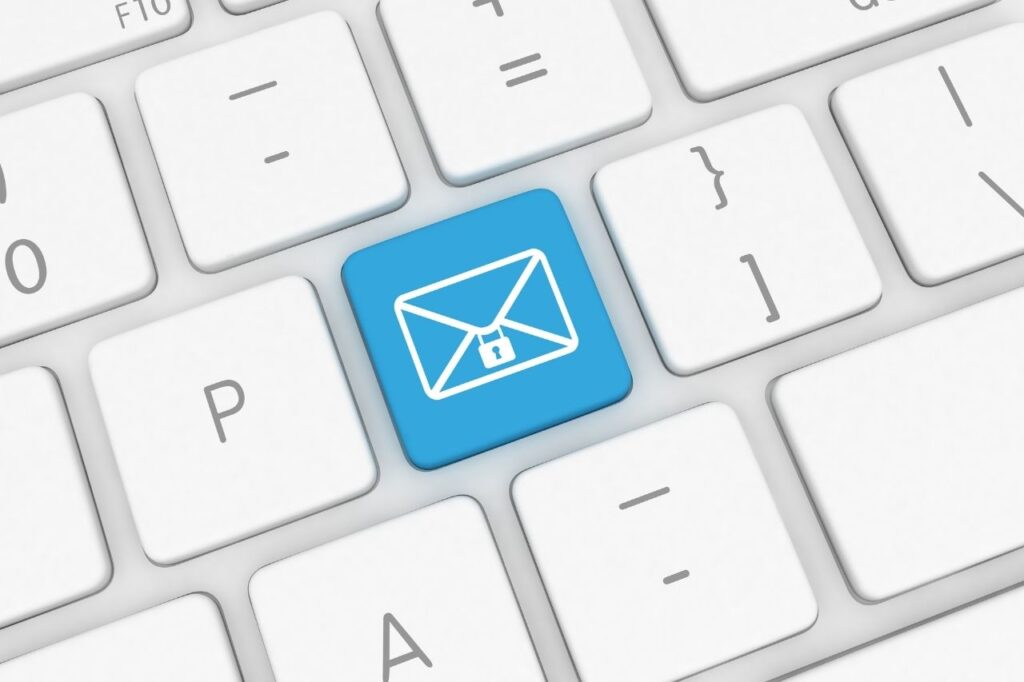More and more physicians and medical experts are turning to secure communication platforms to communicate with their colleagues today. This is a significant stride toward protecting patient privacy, but determining which platform is best for you might be overwhelming as there are hundreds of options out there.
We will cover the basics of secure messaging, discuss the implementation of using secure messaging in healthcare and provide you with a few tips on getting started and maintaining security and privacy. So, whether you’re just starting or you’re looking for some advice on how to improve your secure messaging strategy, carry on and read further.
Contents
- What Is Secure Messaging?
- The Importance of Secure Messaging in Healthcare
- How to Implement a Secure Messaging Solution in Your Healthcare Organization
- Final Thoughts
What Is Secure Messaging?
Secure messaging refers to the process of sending messages between people over various mediums while keeping them secret from any uninvolved third parties. The main difference between traditional forms of communication (i.e., phone calls or face-to-face conversations) is that secure messaging uses technology to conceal messages in a format that is electronically readable only by the intended recipients.
The idea of a secure message has been around since the early ages, but technological advancements have made it possible to send secure messages through any electronic medium. The medical and healthcare industry is responsible for the safety and well-being of many patients daily. This industry has improved exponentially with the growing SaaS technology and the widespread use of smartphones and other mobile devices.
The Importance of Secure Messaging in Healthcare

The use of smartphones and other mobile devices is commonplace in healthcare. Many professionals carry them while working or at home and report using them for work-related reasons, communicating with patients, and checking patient records. Security cannot be an afterthought to adopt this technology; it must become a significant consideration before deploying it to medical staff.
Secure messaging in healthcare allows professionals to communicate without the need for face-to-face interaction, which is not always possible due to time restrictions. It makes it easier to work efficiently and effectively from home or remotely from a patient’s bedside. Aside from that, healthcare workers and entities (as covered by HIPAA) should adhere to the HIPAA regulations.
HIPAA regulations ensure that safety measures handle protected patient health information (PHI). The purpose of these regulations is to protect patients’ privacy and provide safe ways for their PHI data to be transmitted safely across devices and security systems.
- Following HIPAA Regulations Can Reduce Risk of Breaches
Following HIPAA regulations ensures that all messages are protected according to current standards. If a breach does occur within a secure transmission, these regulations ensure that all data is protected. Any person who works with PHI will be held accountable for any violation, including employees, healthcare provider employees, and third parties.
- HIPAA Regulations Make It Easier to Manage Data Transmissions
Healthcare providers can use secure email and real-time messaging to communicate with one another without the need for face-to-face interactions or external devices. By following HIPAA regulations, they can do everything from sending messages on a more impromptu basis or following up on more detailed inquiries through patient records and files.
Secure messaging in healthcare makes it easier for each group of individuals working within this medical system to manage work schedules and ensure everyone receives the same information before beginning treatment.
How to Implement a Secure Messaging Solution in Your Healthcare Organization

Healthcare workers are responsible for keeping all patient information private, secure, and confidential. However, with the growing number of healthcare breaches, keeping data safe is becoming increasingly difficult. Hackers breach into organizations’ networks and steal personal health records (PHRs) containing critical information such as complete name, social security number, address details, and more in some cases.
The following are some ways your organization can protect patients’ information from being stolen:
Use of messaging app with strong encryption and HIPAA-compliant
Many applications offer various features, including encrypted messaging today. Using applications like OhMD, TigerConnect, Spok, and HaloHealth offers end-to-end encryption and are HIPAA-compliant. All messages sent between two app users are secured and unreadable to any third party without encryption keys.
Use of a reliable VPN
Remote access is inevitable when working with patient data, especially specialty practices. Unfortunately, accessing a secure network via Wi-Fi or cellular connection can be challenging since exposure to the open internet makes your device vulnerable to attacks. A virtual private network (VPN) creates a secure tunnel between two devices, allowing them to securely transmit information over public networks without the threat of exposure at any point during transmission.
VPN allows healthcare professionals to safely work remotely on their organization’s network while maintaining security protocols. HIPAA requires all protected health information (PHI) to be transmitted electronically must utilize an encrypted protocol such as Secure Sockets Layer (SSL). Using SSL ensures that user credentials and data are not intercepted by third parties while traversing the open internet.
Use of HIPAA-compliant online faxing services
Traditional fax machines are becoming obsolete in healthcare organizations, especially with the rising popularity of EHRs due to their ability to send encrypted messages quickly and efficiently.
However, HIPAA requires that PHI cannot be transmitted via email unless it has necessary encryption measures in place. Thus, many providers utilize online fax services over traditional fax machines to securely exchange patient information or test results without the risk of interception or data theft. The use of HIPAA-compliant fax services like iFax ensures that all exchanged information is safe from being compromised at any given time.
Use of EHR and EMR solutions
Lastly, utilizing an electronic health record (EHR) or electronic medical record (EMR) allows healthcare providers to access patient data from the organization’s database. In addition, it also alleviates the need for patients to carry physical documentation of their records since EHRs usually come equipped with digital storage capacities.
Final Thoughts on Secure Messaging in Healthcare
Healthcare organizations are increasingly required to secure patient data and protect the integrity of their organization. Security breaches can lead to fines, negative publicity, loss of trust from patients, and even bankruptcy for a healthcare provider. Secure messaging in healthcare solutions offer an easy way to meet compliance requirements while also providing employees with greater freedom to communicate internally or externally.
Thinking of implementing a secure messaging app in your facility? You can check iFax, a HIPAA-compliant online faxing solution that healthcare professionals use to fax medical records and documents safely.
Need Help Sending Messages to Healthcare Organizations? iFax Can Help!
When it comes to transmitting sensitive healthcare documents, security and compliance are essential. iFax provides a reliable, HIPAA-compliant faxing solution that healthcare professionals trust to send patient information securely. Whether you’re submitting claims, authorizing treatments, or sending medical records, iFax ensures that your documents are delivered safely and efficiently.
Fax Documents to Major Healthcare Organizations Easily
With iFax, you can fax documents to a wide range of healthcare providers and insurers, including:
Delta Dental Offices Across the U.S.
Insurance Providers and Government Healthcare Programs
Cigna – Submit claims and preauthorization forms securely.
Medicaid – California – Send Medicaid applications and claims with ease.
Medicaid – New York – Fax documents related to New York Medicaid services.
Medicaid – Texas – Manage Medicaid documents for Texas beneficiaries.
Medicaid – Florida – Submit forms and updates for Medicaid services in Florida.
Medicaid – Pennsylvania – Transmit documents for Pennsylvania Medicaid coverage.
Medicaid – Ohio – Fax Medicaid applications and updates for Ohio residents.
Medicaid – North Carolina– Send Medicaid-related forms to North Carolina offices.
With iFax, you can ensure that all your documents are sent securely to the correct organization, meeting the highest standards of compliance and data protection. Sign up today and experience the convenience of hassle-free faxing to healthcare organizations!






